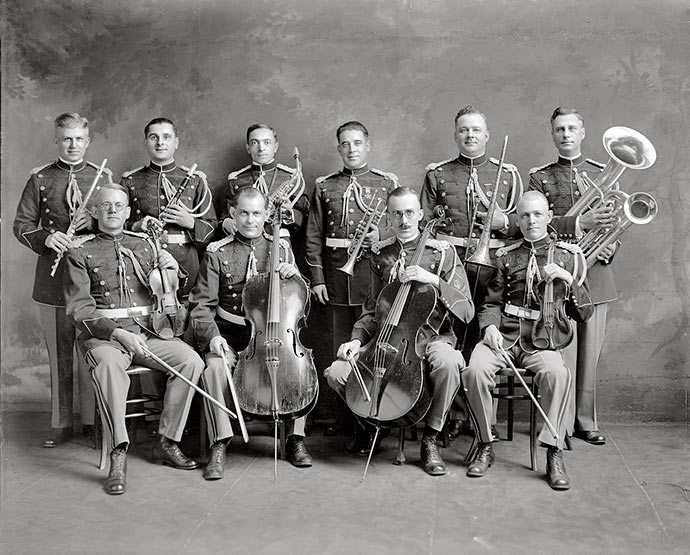Seventy-six trombones
Nov 15, 2009
All right, not seventy-six, but definitely one trombone in this band-sextet-plus-string-quartet from the U.S. Marine Corps Band in 1910. And a double-belled euphonium--for real! Over there at the right.
Do you remember the double-bell euphonium, from "Seventy-six trombones" in Meredith Willson's Broadway show "The Music Man"? I'd thought it was a joke, a made-up instrument that the ignorant folks of River City, Iowa, would believe was real. But I guess it was actually more of an in-joke, a real band instrument of the era, with a name so silly that only the cognoscenti would believe it. As always, I ain't no cognoscenti.
This photo is from the middle of the era celebrated in "The Music Man," when towns all over America built bandstands in the park and organized their own brass bands. In the cities, commercial brass bands were making big money. John Philip Sousa, everybody's favorite bandmaster and composer, had joined the Marine Band at the age of thirteen and conducted it long enough to play for five presidents. But before the turn of the twentieth century, Sousa left the Marines to seek his fortune with the baton of his own Sousa Band, which was wildly successful and became the first American musical organization to tour Europe. In the 1920s, the piccolo player in the Sousa Band was none other than Meredith Willson, who who spent the next thirty years working on music and lyrics for "The Music Man," which finally debuted in 1958.
Today's Marine Band is still "The President's Own" and the premier ensemble of the U.S. military, which claims to employ more musicians than any other organization on earth. The band uniforms haven't changed much in the past ninety-nine years, though the shoes are much shinier nowadays.
Oh, and here's "Seventy-six Trombones," as performed by the trombone choir of Anchorage, Alaska.
